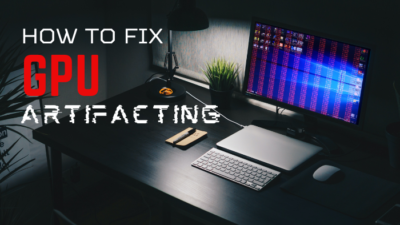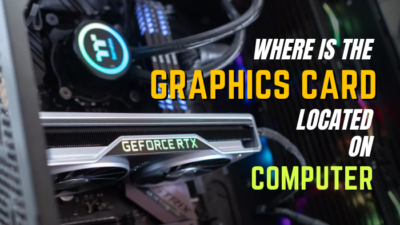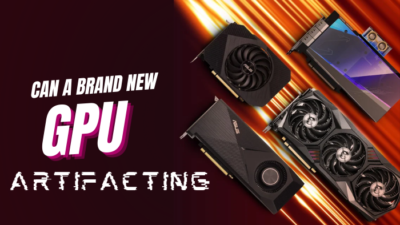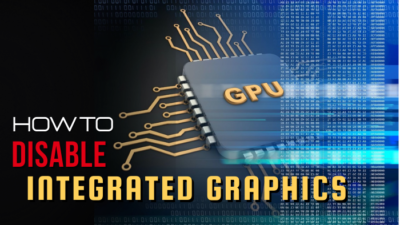Running programs & games on the wrong GPU is a common mistake. You’ll find your programs sluggish, and games won’t even launch if it’s running on basic Intel HD graphics.
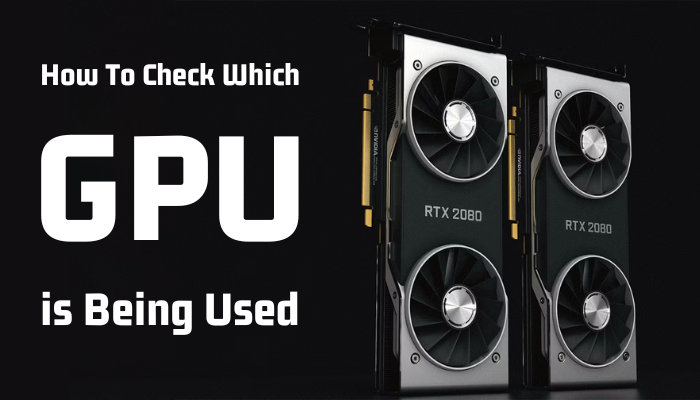
In my case, games were laggy even if I selected high-performance graphics for the games. It happened because other programs used the discrete GPU simultaneously, leaving small headroom for the games.
I’ll walk you through the methods I checked, which graphics are being used for what program, and how I fixed it.
What Are The Methods to Check Which GPU is Being Used?
You can easily check which GPU is being used between multiple Graphics via Task Manager. In The GPU Engine column, you’ll find GPU-0 and GPU-1 to determine which program uses which graphics. Furthermore, you can use MSI Afterburner for advanced monitoring.
Whether you use a laptop or a desktop, multiple graphics in your system confuse programs about which one to use. Although Windows allocate discrete GPU for the graphics intensive programs and HD graphics or weaker GPU for other programs, proper management of GPU is a must.
Therefore, I’ll share some useful methods to check which graphics are being used for which programs or games. You’ll find four methods in the section below.
Use Task Manager
Monitoring components using a task manager is a standard procedure to check GPU usage in Windows. If you own multiple graphics in your system, you can check the utilization of all GPUs that are named GPU-0, GPU-1, GPU-2, and so on.
Here is the step-by-step checking process of which graphics are being used via Task Manager:
- Launch Task Manager with the key combo of Ctrl + Shift + Esc.
- Select the Performance tab.
- Click on the GPUs from the left.
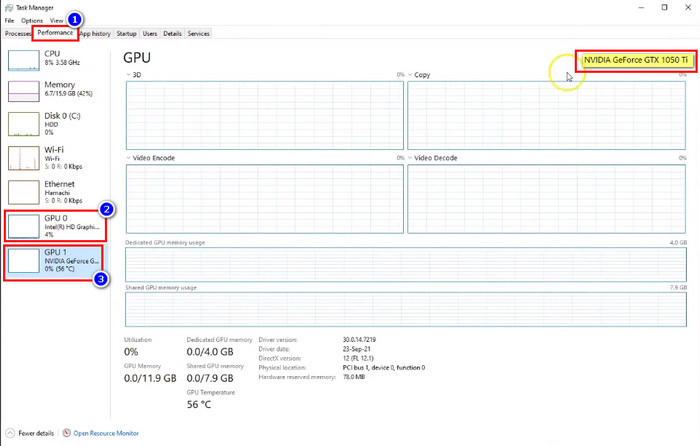
- Remember which graphics is which one under the name of GPU-0 & GPU-1.
- Switch back to the Processes tab.
- Click on the GPU Engine column.
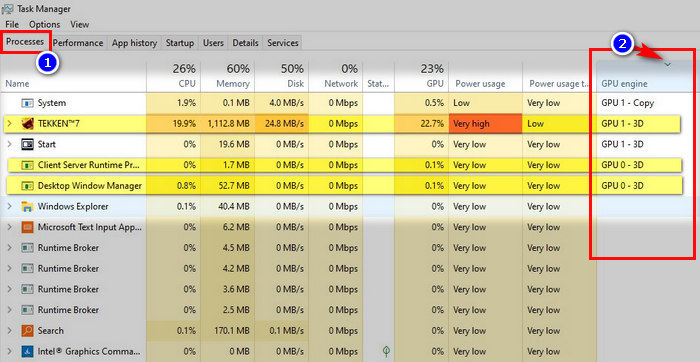
- Make sure the arrow beside the GPU Engine faces down.
You’ll see GPU-0 & GPU-1 beside the program using the graphics. Better if you run a GPU-intensive program or game to examine more accurately. But if you need to monitor the exact utilization percentage in real time, follow the next method below.
Monitor Using RivaTuner (Afterburner)
MSI Afterburner is the best and easy to use among all the GPU monitoring & overclocking software. But in this case, you’ll need to focus on RivaTuner, which comes within the Afterburner package.
Make sure you have ticked the RivaTuner Statistics Server while installing Afterburner. 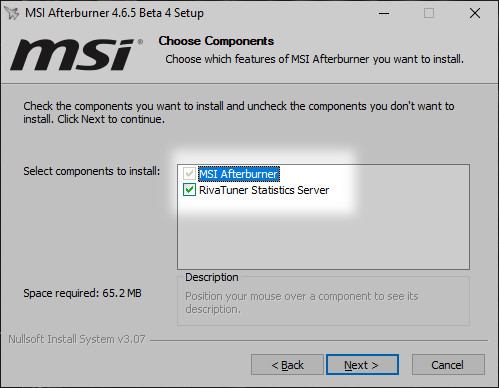
Later, follow the instruction below to monitor two or more GPUs in the system. To check which one is being used at which percentage.
Note: Remember to check GPU information & Name according to GPU serial. You’ll find your integrated HD/UHD/iGPU as GPU-1 and discrete graphics cards as GPU-2 and GPU-3 or more if you have more GPUs.
Here is the complete process of the RivaTuner settings to check multiple GPU usage:
- Launch Afterburner & Click on the Settings icon.
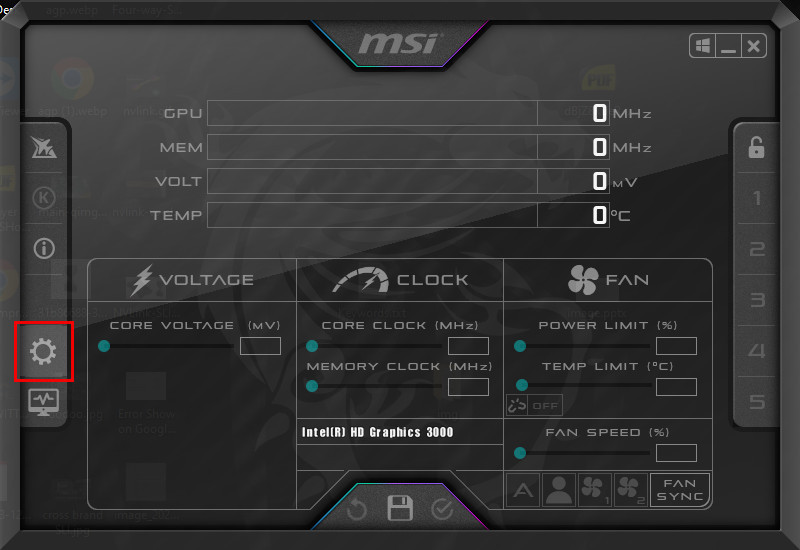
- Click on General Tab and Check GPU names under GPU-1 & GPU-2.
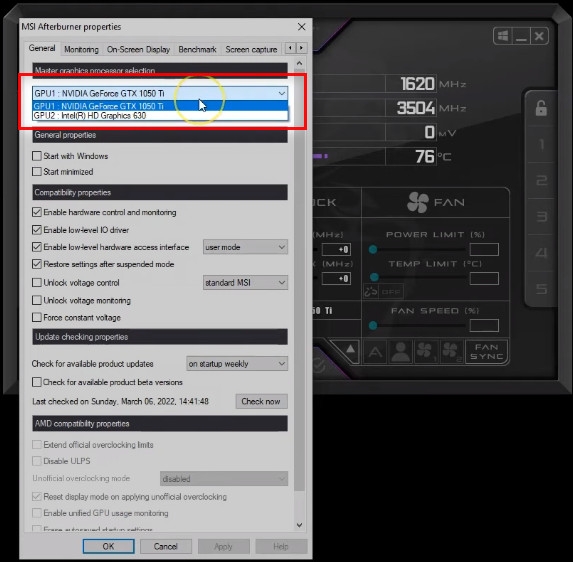
- Select the Monitoring Tab.
- Click on GPU-1 under the Active Hardware Monitoring Graphs section.
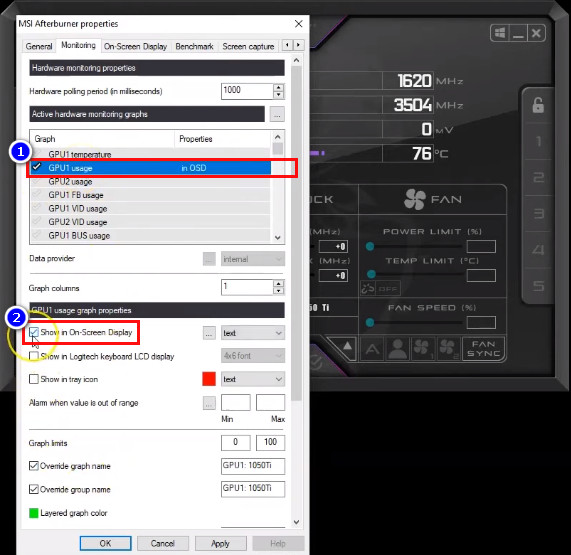
- Tick the box named Show in On-Screen Display.
- Repeat the same process by clicking on GPU-2.
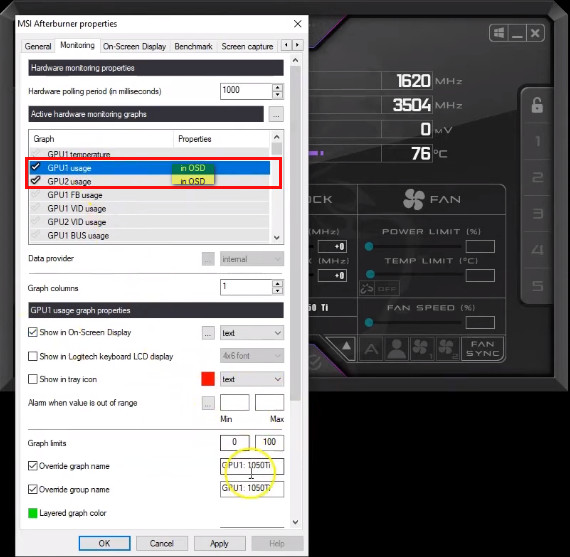
- Hit OK while both GPUs have OSD beside the name & launch a game.
You’ll see both the GPU usage in the game in the upper left corner of the screen. If your discrete GPU reaches 100% or near, it’s fine and optimized initially.
Check through GPU-Z
Another easy-to-use tool for Graphics cards is GPU-Z. It’s a smart and portable solution if you just want to view the currently running GPU Clock speed and the power consumption rate (Voltage) at a particular time.
Although you can’t Overclock GPU with this, you can give a stress test of the GPU. Launch a game in the background. You can check the clock speed rise to ensure graphics card usage & whether the GPU functions appropriately.
If you see a sudden increase in the clock speed of either GPU, you’ll know which one is being used.
Inspect Physically
You can check whether your dedicated GPU is being used or idle physically. Just follow the noise level of the GPU fan if it rises while imposing a heavy load.
To be sure, hear if the noise increases while playing games, rendering videos, or at any GPU-heavy workload. If your DGPU is being used, you’ll notice a significant rise in GPU fan noise; otherwise, it will be usual or silent noise.
How to Check if You Are Running Programs On the Wrong GPU?
Although SLI & Crossfire is the best way to optimize multi-GPU performance, you can’t SLI two different GPUs.
However, the crossfire offers better flexibility by allowing a tad of different discrete GPUs together. You can configure different graphics cards to run in crossfire more for some of the AMD GPUs.
Other than those, if you own completely different GPUs, like one from Nvidia and another from AMD, none of the above applies. You can use a single graphics unit at a time.
While the system decides which program should use which GPU, it can mess up things easily; set the priority and program affinity manually to achieve better performance. Otherwise, background apps can acquire many GPU resources, leaving little headroom for important programs & games.
For instance, After Effects, Premier Pro, and Photoshop run an ‘Adobe client’ in the background and use GPU resources. Then if you fire up a game without stopping the Adobe client, the game will lag indefinitely.
To overcome such issues, you can end similar tasks from the Task Manager. But it’s a hassle. If you have multiple GPUs, then why not share the load?
You can set which program will use which GPU and experience a better performance instead of stacking multiple workloads on one GPU. Basic graphics-demanding programs should be put on lower-powered GPUs & high GPU-demanding ones to high-tier GPUs.
In the worst case, I’ve faced a problem: the game isn’t launching suddenly. After a mild investigation, I found the game was being launched on a lower graphics unit instead of my dedicated GPU.
I’ve noticed my GPU usage is so low while running a moderately GPU-intensive game. Then I switched the GPU affinity to a dedicated GPU and solved the issue.
How to Switch Between Basic & Discrete Graphics?
Dedicated graphics offer better performance than basic HD/UHD integrated graphics. So, running games on a lower-tier GPU is worthless. It won’t even turn on, let alone well performance.
Although the system is designed to choose the better GPU to run games and graphics-based software, it loads all the programs into one GPU, leaving the PC in an unoptimized state.
However, integrated graphics like Vega, RDNA, and iris Xe perform decently. A mid-tier discrete graphics card will serve better if you compare integrated graphics Vs. Dedicated graphics.
Here is the step-by-step process for switching between graphics:
- Open Settings by Key Combo Windows + I.
- Click on System.

- Select Display from the left.
- Scroll to the bottom of the right section & Click Graphics Settings.
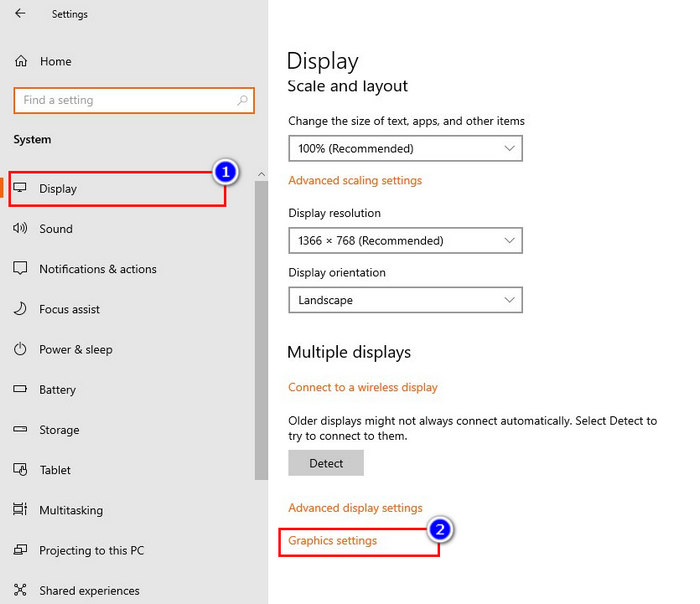
- Add programs & games with the Browse button from the directory.

- Click on the program or game you want to set GPU affinity.
- Select Option.
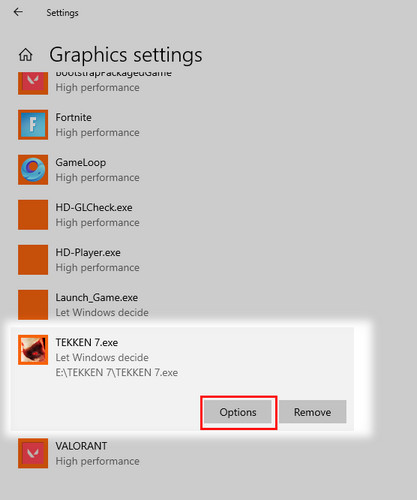
- Choose the GPU you want to run that specific Program or Game.
- Click on High Performance if it’s a game.
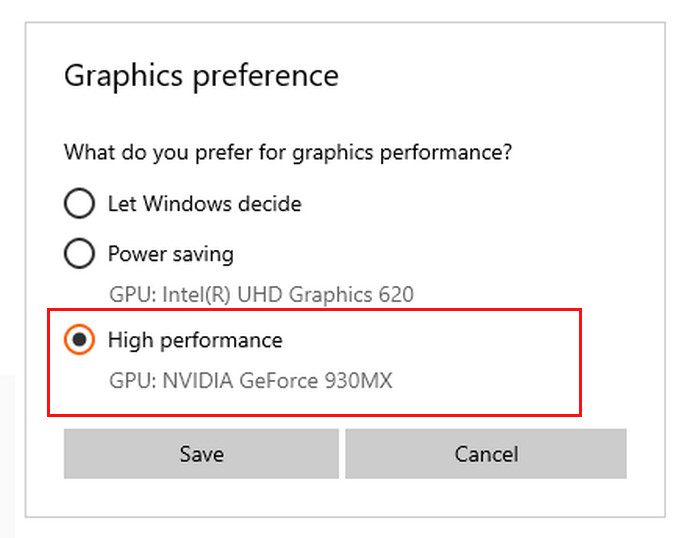
How to Check which GPU is being used in Linux?
Linux is becoming popular by the time where people are concerned about their privacy. The Open-source nature has grabbed my attention, and I ended up as a Linux user. I use Ubuntu on my laptop and also dual-booted POP OS with Windows.
In my experience with Linux, I’ve found this OS more stable and efficient on hardware resource utilization. It can handle multiple GPUs pretty well. But like Windows Task Manager, Linux System Monitor doesn’t show GPU usage so well.
Therefore, I use NVTop to monitor GPU utilization. It can also show multiple GPU usage or whether a GPU is being used. I usually check the GPU bottleneck with NVTop. Although another option is named (h)top, the NVTop is better in every aspect.
For Ubuntu & Debian-based Systems, run the below code in the terminal:
For Arch-based systems:
You can monitor any GPUs using the NVTop and check which graphics card is being used currently at what percentage.
FAQs
Does a graphics card improve FPS?
Yes, the graphics card is an essential factor that increases the gaming FPS significantly.
What gives a PC more FPS?
Although overall components of the computer affect the FPS of the game, RAM is important to extend FPS.
Is RTX better than GTX?
Of course, RTX is better initially. It has RT cores and more unique features that can present an immersive visual experience.
How much VRAM is needed?
Newer games require at least 8GB of VRAM to 12GB VRAM for a better experience.
Final Words
An unoptimized system of an ignorant user is a waste. Using the least resources, even if you own better, is idiotic. Use a properly optimized system and make the most out of it by following the instructions in this article.
And remember to leave a comment below if you find this article beneficial & informative.

